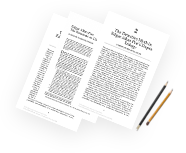looking for help with filling out all the info on this study guide. thanks!
BIOL 260 MICROBIOLOGY STUDY GUIDE: MODULE 2
PRINCIPLES OF DISEASE AND PATHOGENESIS
1. Distinguish between signs and symptoms of disease.
2. Define infectious, communicable and contagious diseases and give examples.
3. Define nosocomial infection and explain how nosocomial infections can be prevented.
4. Describe the 5 periods (stages) of a disease: incubation, prodromal, illness, decline, convalescence.
5. List Koch’s postulates, and summarize the limitations of Koch’s postulates.
6. Explain the difference between a pathogen’s infectious dose and lethal dose.
7. Distinguish between primary and opportunistic pathogens and give examples.
8. Define portal of entry, parenteral route, portal of exit.
9. Using examples, explain how microbes adhere to host cells.
10. Define the following types of infections: local, focal, systemic, primary, secondary
11. Explain why hyaluronidase, DNAase, phospholipase, collagenase and kinase are called “spreading factors.”
12. Differentiate between endotoxins and exotoxins, and give examples of each.
13. Define superantigen.
14. Using examples, explain how bacteria evade the immune system.
15. List the principle modes of disease transmission and give examples of each.
antibiotics AND ANTIMICROBIAL RESISTANCE
1. Describe the various mechanisms of action associated with antibacterial drugs.
2. Describe the different mechanisms for drug resistance used by bacteria.
3. Investigate antibiotic-resistant “superbugs.”
BACTERIAL DISEASES
1. Know the major body regions that are colonized with normal flora (microbiota), and list some microorganisms normally found in each area.
2. For the following organisms, know where they are normally found, what diseases they cause, virulence factors and mode of transmission (epidemiology). Also know which organisms have vaccines:
·
Staphylococcus aureus
·
Streptococcus pyogenes (beta-hemolytic Group A Streptococci)
·
Streptococcus mutans
·
Streptococcus pneumonia
·
Corynebacterium diphtheria
·
Mycobacterium tuberculosis
·
Bordetella pertussis
·
Haemophilus influenza type B
·
Neisseria meningitides
·
Chlamydia trachomatis
·
Neisseria gonorrhoea
·
Escherichia coli
·
Salmonella sp.
·
Clostridium perfringens
·
Clostridium difficile
·
Clostridium botulinum
·
Clostridium tetani
·
Borrelia burgdorferi
ADAPTIVE IMMUNITY AND VACCINES
1. Differentiate between antibody-mediated (humoral) and cell-mediated immunity.
2. Define antigen and antibody.
3. Give an example of each of the following: natural active immunity, artificial active immunity, natural passive immunity and artificial passive immunity.
4. List the cells of the immune system and describe the functions of each.
5. Define cytokine.
6. Explain where B cells and T cells originate and mature.
7. Explain how antigens are processed and presented.
8. Explain how helper T-cells are activated.
9. Differentiate between plasma cells and memory B-cells.
10. Explain the role of memory T-cells and B-cells.
11. Distinguish a primary from a secondary immune response.
12. Explain the functions of antibodies and describe their structural and chemical characteristics.
13. Compare/contrast the five classes of antibodies.
14. List the cells involved in cell-mediated immunity.
15. Describe the function of TH2 helper T-cells.
16. Name the types of cells that are targeted by cytotoxic T-cells.
17. Differentiate IgE mediated hypersensitivity from TH1 cell delayed-type hypersensitivity.
18. Explain how vaccination works
19. Differentiate between the following types of vaccines: live, attenuated; inactivated/killed; subunit/conjugate; toxoid




